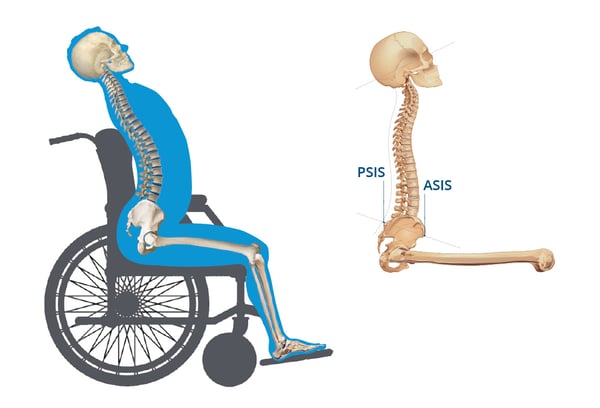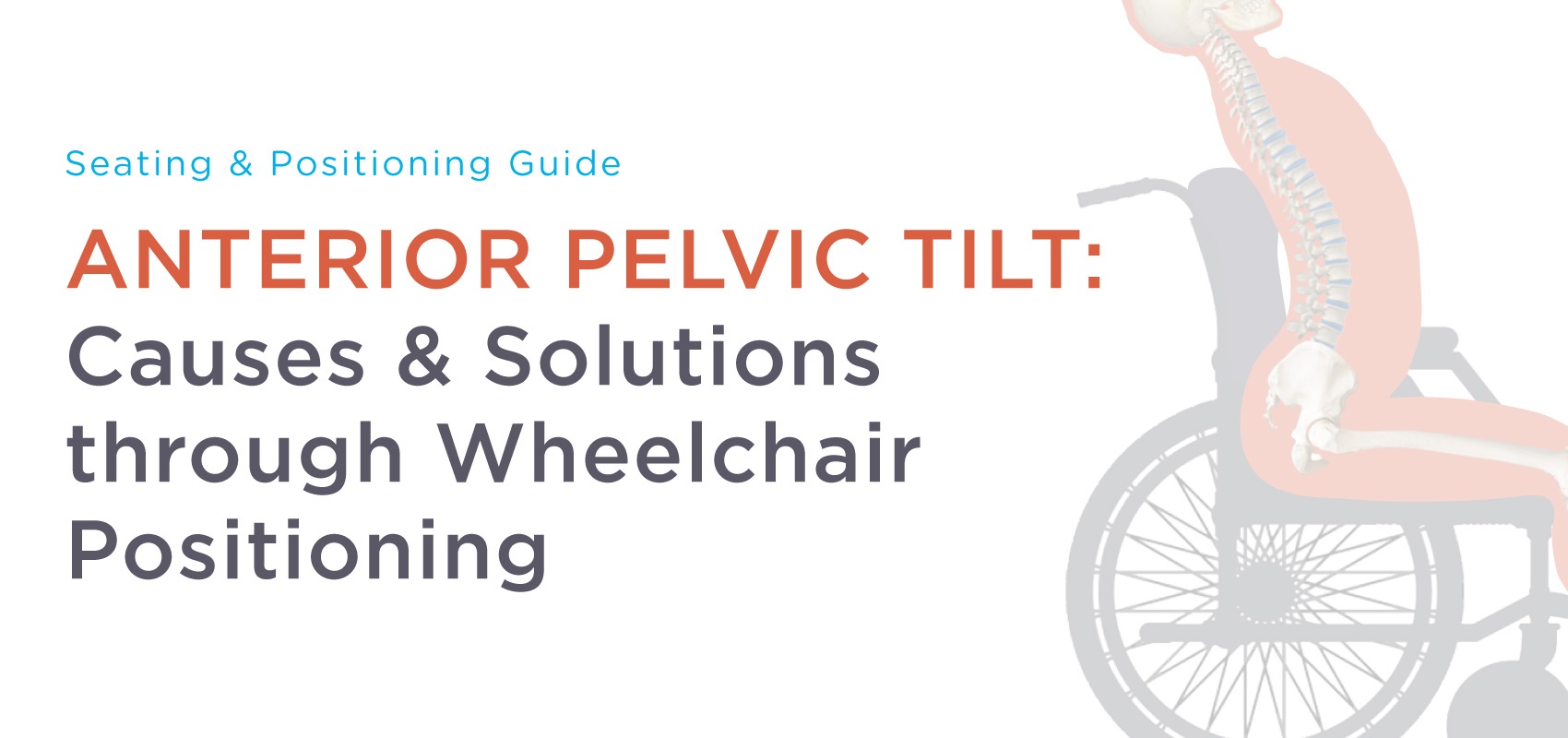Part 4 in our LTC Seating & Positioning series intended to shed some light on the mystery of seating and positioning in the LTC setting. See Part 1, Part 2, and Part 3. For the full digital guide click here.
Anterior pelvic tilt is not as commonly seen in the nursing home setting as posterior pelvic tilt. Within the nursing home anterior pelvic tilt is usually caused by one of the following:
- Obesity, especially in conjunction with poor abdominal strength. The excess tissue in the pelvic region pushes the pelvis forward, creating more lumbar lordosis and an anterior pelvic tilt.
- Residents with tight hip flexors, which pull the pelvis into an anterior pelvic tilt.
So again, let's review exactly what is going on, but this time with an anterior pelvic tilt:

|
|
|
What is the pelvis doing? |
PSIS is higher thsn the ASIS |
|
What is the spine doing? |
Excessive lordosis of the lumbar and cervical spine, producing a swayback. Resident hyperextends at the thoracic region, pushing posteriorly against back support as if they are falling backwards over the back support. This posture places them at risk of tipping the chair over backwards and the use of anti-tippers is recommended. |
|
What are the head and neck doing? |
Hyperextension of the neck An upward eye gaze toward the ceiling |
Why is an anterior pelvic tilt so dangerous to our elderly resident?
Lets familiarize ourselves with common anterior pelvic tilt symptoms:
The excessive lumbar curvature causes extra pressure particularly to the bladder and stomach. Pressure on the digestive tract and bladder cause:
- Increased risk of constipation and bowel impaction
- Gastritis and reflux issues
- Inadequate emptying of the bladder, leading to an Increased risk of UTIs, bladder, and kidney infection
The head and neck can also be significantly affected by an anterior pelvic tilt as the neck goes into hyperextension with the head pointed upward toward the ceiling. When we allow a resident to sit with an excessive motion at the end range, we affect an inadequate swallow and place the resident at higher risk of:
- Choking
- Aspiration
Visual field and ability to communicate can also be impacted with this unnatural head position:
- Eye gaze is no longer in midline but looking upward, and the resident often lacks the neck strength to bring the head back or maintain midline eye gaze. They cannot see the people they are trying to communicate with.
- This difficulty with communication can lead to withdrawal from social activities.
So, what tips can be given to a therapist when an anterior pelvic tilt has been identified?
- Avoid the use of large lumbar rolls or supports that would create more curvature of the lumbar spine.
- Ensure that there is not too much downward slope of the wheelchair seat, which would cause the knees to be lower than the hips. This promotes an anterior pelvic tilt.
- Utilize a moldable cushion and back support that conforms to the curvature, maximizing surface contact for optimal pelvic and spinal stability and for even pressure redistribution.
- Stability is the goal, so provide a back support tall enough for the resident. Measure from seat surface to the top of shoulder.
- Avoid using back supports that are too upright and would promote an anterior pelvic tilt.
- Use of anti-tippers is recommended since the resident pushes posteriorly so forcefully into the back support, placing the resident at risk for tipping the chair backwards.
Even though this abnormality is not as commonly seen, it is important to understand what is going on and identify it unmistakably. In doing so, you will be prepared to position the resident accordingly for optimal stability, alignment, and pressure distribution, preventing undue harm.

Ana Endsjo, MOTR/L, CLT
Clinical Education Manager LTC Division
Ana Endsjo has worked as an occupational therapist since 2001 in a variety of treatment settings. She has mainly worked with the geriatric population, dedicated to the betterment of the treatment of the elderly in LTC centers. Her focus has been on seating and positioning and contracture management of the nursing home resident. With this experience, her hope is to guide other therapists, rehab directors, nurses, and administrators through educational guides, blogs, webinars, and live courses in her role as Clinical Education Manager for the long term care division.

